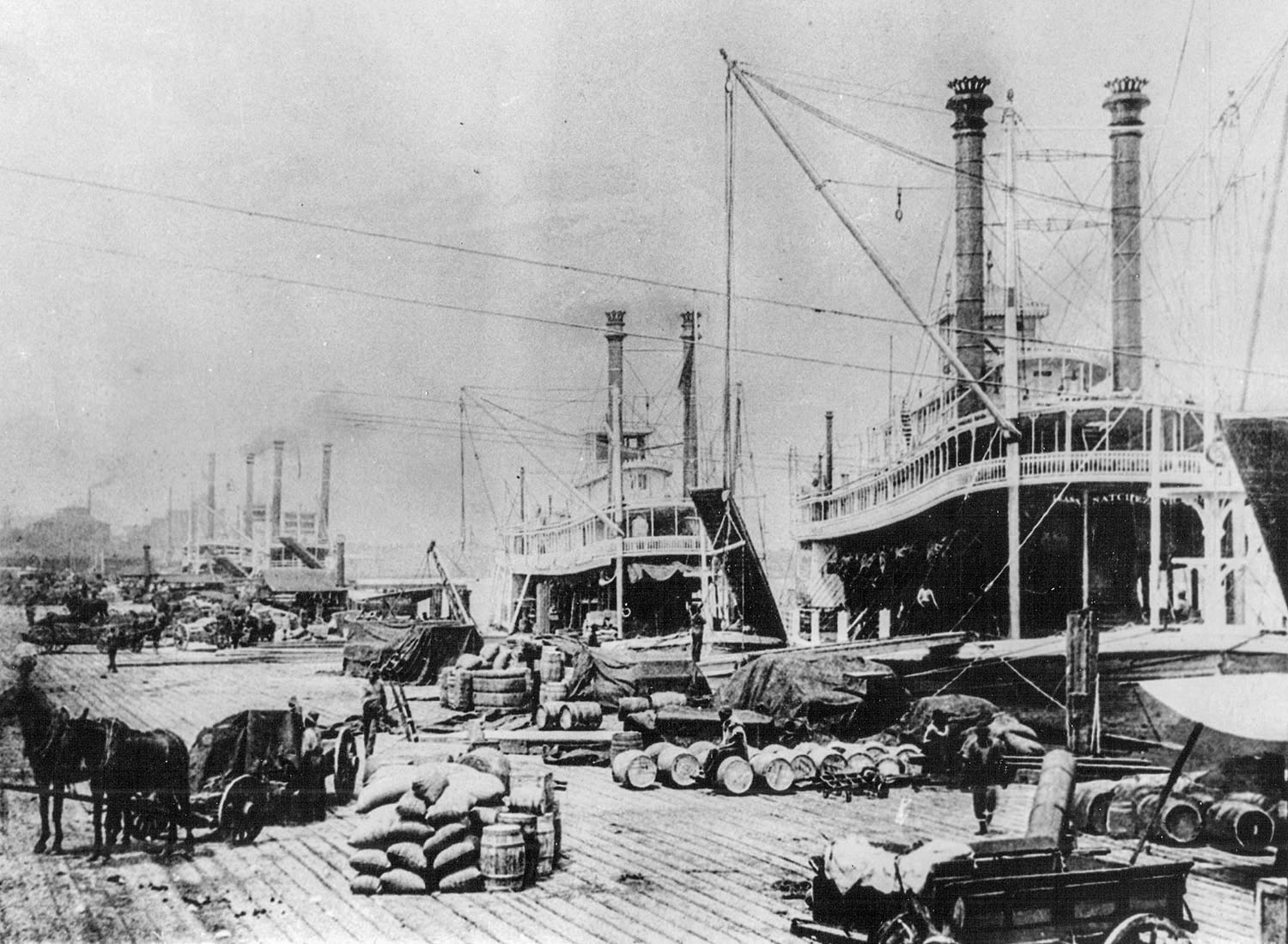This week’s Old Boat Column image is a recent acquisition picturing the New Orleans wharf. Although not all of the steamboats can be identified, the two vessels at the far right are the Carneal Goldman and the Natchez No. 8. This is yet another of those wonderful photos where the viewer can vicariously hear the activity on the levee and almost smell the smoke emanating from the boats.
Carneal Goldman
The Carneal Goldman was a product of the Howard Shipyard at Jeffersonville, Ind. Built in 1885 on a wooden hull measuring 143 feet in length by 25.1 feet in width, the sternwheeler was named for a Louisiana cotton planter who owned extensive acreage in Tensas Parish. The riverboat operated in the Natchez-Vicksburg trade and made three trips weekly.
In 1893, the vessel was taken to Madison, Ind., and parts were used in the construction of the steamer St. Joseph.
Natchez No. 8
An elegant sternwheeler having graceful lines, this boat was also built by the famous Howard Shipyard, and launched in 1891 at a cost of $43,000. With a wooden hull measuring 225 feet in length by 40 feet in width, the handsome vessel was powered by engines having 20-inch cylinders with an 8-foot stroke. Three boilers provided the steam.
The new Natchez (all previous boats of the name were sidewheelers) was under the command of Capt. Bowling Leathers, son of Capt. T.P. Leathers, the colorful and somewhat infamous riverman who was known as “Old Push,” in honor of the Pushmataha Indian tribe.
Bowling’s wife, Blanche Douglass Leathers, was the daughter of a wealthy Tensas Parish planter who shipped his cotton on Leathers’ boats. Marrying in 1880, Blanche moved aboard the Natchez (No. 7) with her husband and learned the river under his tutelage, earning her master’s license in 1894. Capt. Blanche was reputed for being a kindly but no-nonsense manager who ran a tight ship and perpetuated the family tradition of steamboating.
Capt. T.P. Leathers died in 1897, as the result of being struck by a bicycle as he crossed St. Charles Avenue in New Orleans.
In November 1896, the sternwheel Natchez sank just above its namesake city of Natchez, Miss., with 1,700 bales of cotton and 8,757 sacks of seed aboard, the cause attributed to dried hull seams. Quickly raised and repaired, the riverboat was soon back in service, only to be involved in another incident when, in early 1897, it hit the bank at Cottonwood, some 20 miles below Vicksburg, tearing down the jackstaff and twin stages, as well as causing the tall smokestacks to topple.
By 1902, both Capts. Bowling and Blanche had retired from the river; the Natchez was then under the command of Capt. William Duke. The Natchez received new boilers in 1914, but was sold at auction by U.S. Marshal in 1915 for $6,500 to Capt. Duke.
The steamboat was operated in the New Orleans-Grand Lake trade with minimal success, often laying up for lengthy periods due to lack of business. The Natchez was ultimately dismantled in 1918.
Capt. Blanche Leathers, who was fondly called the “Angel of the Mississippi,” died January 25, 1940.
Caption for photo: The New Orleans waterfront in 1892. (Keith Norrington collection)
Editor’s note: For questions or suggestions regarding the Old Boat Column, Keith Norrington may be contacted by e-mail at curatorkeith@yahoo.com, or by mail through the Howard Steamboat Museum at P.O. Box 606, Jeffersonville, Ind. 47131-0606.




